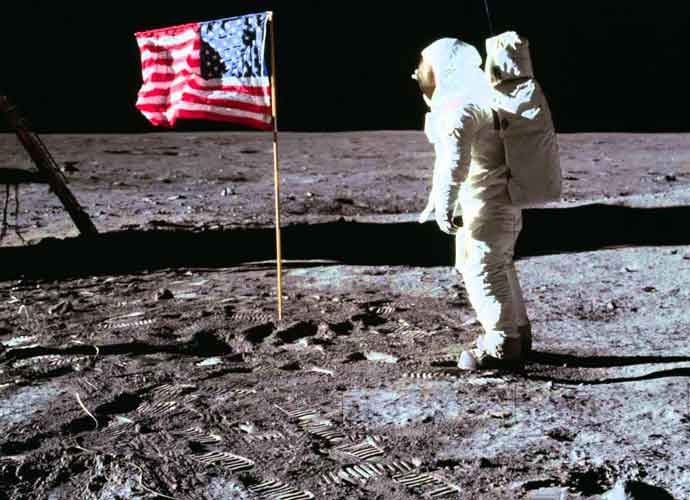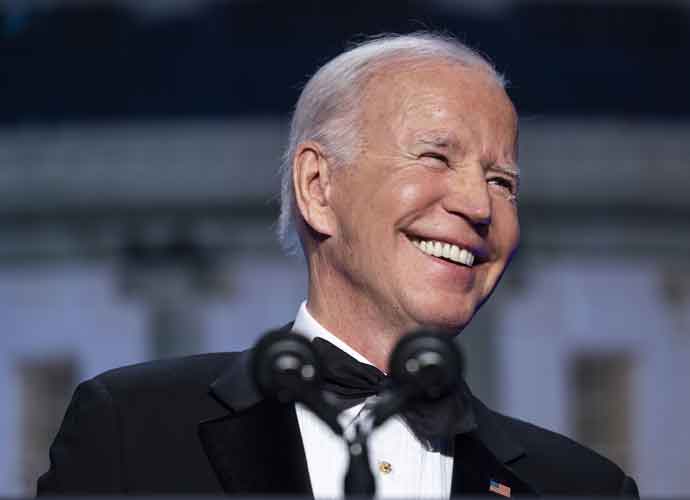VIDEO EXCLUSIVE: Todd Douglas Miller On ‘Apollo 11,’ Landing A Man On The Moon
Apollo 11 is a new documentary film that shows never-before-seen footage and audio recordings of the eponymous 1969 NASA mission, and director Todd Douglas Miller explained what the film reveals and its historical significance today to uInterview.
“We were actually working with what was available at the time,” Miller explained. “We cast a wide net within the spider-web network of NASA facilities and also the National Archives Network.”
“In casting that net, what came back several months into the project was the discovery of these large format reels, and through a series of testing the footage we quickly discovered how not only historically important they were but [also] the quality in which they were kept was just unsurpassed. They literally had not been touched in 50 years.”
Apollo 11 was shot in 70mm and consists entirely of archival footage. It follows last year’s First Man, Damien Chazelle‘s historical drama about the mission in which Ryan Gosling played Neil Armstrong.
50 CELEBRITIES WHO DIED IN 2018 – TRIBUTE SLIDESHOW
Miller then explained that he and his crew “re-scanned” many archives of 16-35mm film and then performed extensive research on the subject of Apollo 11.
“When you listen to all these various flight controllers working 24/7 — not just on Apollo 11 but on all of the Apollo missions — you realize just what a gargantuan and Herculean effort it was. Hundreds of thousands of people [came together] all in unison to do this monumental achievement, to put the first man on the moon.”
Miller also pointed out that before Apollo 11, NASA had merely a 48% success rate of sending manned and unmanned missions to the moon.
“From a project management standpoint, it’s probably the greatest project that’s ever been made,” the director said.
Miller said his film only briefly shows astronauts’ backstories, like the fact that Armstrong and Buzz Aldrin were both pilots in Korea.
Unlike many documentaries, Apollo 11 does not use a narrator, and Miller explained the very particular reason for this.
“The Apollo 11 mission had been covered enough. Basically, you know what happens but also there was a public affairs officer there was in Mission Control he sat fairly close to the flight director in the back and he was kind of our narrator,” Miller said. “He was, you know, it was almost [like] having Bob Costas do a football game: he was giving you a blow-by-blow of what was happening in very layman’s terms so someone like me or the audience could understand.”
Full interview transcript below:
Q: How did you find the footage used for the film?
A: Well we were actually working with you know what was available at
the time we kind of cast a wide net within the spiderweb network of
NASA facilities and also the National Archives Network and then
casting that net what came back several months into the project was
this discovery of these large format reels. Through a series of, you
know, testing the footage we we quickly you know discovered how it not
only historically important they were but just the the quality in which they were kept was just unsurpassed. They literally had not been touched in 50 years. So of course we we felt a you know a very big responsibility because it became not only a film but also an archival preservation project.
What we were set out to do was just to rescan or to rescan all of the available 16 and 35 millimeter film that was in existence, but to do that we really had to launch into a research phase to see exactly how much material was out there and that’s when this was discovered. When you shoot a large format you need big teams to do it and when you start getting into because it just wasn’t the footage we had over eleven thousand hours of mission control audio so when you listen to all these various flight controllers working 24/7 on just not Apollo 11 but all the Apollo missions and you know all the programs that predate Apollo you realize just what a gargantuan just Herculean effort it was hundreds of thousands of people all in unison to do this monumental achievement to put the first man on the moon.
Q: How concerned was NASA about the possibility of failure?
A: yeah I mean our film highlights specifically Apollo 11 but it’s important to note before Apollo 11 NASA only had about a 48 percent success rate of sending manned and unmanned missions to the moon. There was rockets, the Atlas rocket was constantly blowing up on the pad astronauts lost their lives in the Apollo 1 fire and other astronauts in training missions. It wasn’t a flawless you know game to get to Apollo 11 there was many many hardships and and bumps along the way you know just from a project management standpoint it’s probably the greatest project management you know a project that’s ever been made you know we’re just humbled and honored that we have a chance to share it with you know audiences.
Q: What stories did you find about the astronauts?
A: Actually getting it into the backstories we don’t dwell on it in the film, but you know you read their autobiographies you go through their pictures you talk to them you talk to their family members Buzz Aldrin and Neil Armstrong were pilots in Korea. Buzz shot down a MIG and then pulled out a camera and got still photographs of the pilot ejecting. Neil himself saw a lot of his comrades die on the USS Randolph and you realize just everything that happened in their lives were leading up to this one moment.
Q: Why did you decide not to use a narrator?
A: Apollo 11 mission had been covered enough we all knew you know what basically you know what happens but also there was a public affairs officer there was in Mission Control he sat fairly close to the flight director in the back and he was kind of our narrator. He was you know it was almost having Bob Costas do a football game. He was giving you a blow-by-blow of what was happening in very layman’s terms so someone like me or the audience could understand. Certainly I’m just a fan of you know direct cinema experiences putting audiences right there with events that are happening and this was just a way to do that.
RELATED ARTICLES
Get the most-revealing celebrity conversations with the uInterview podcast!









Leave a comment